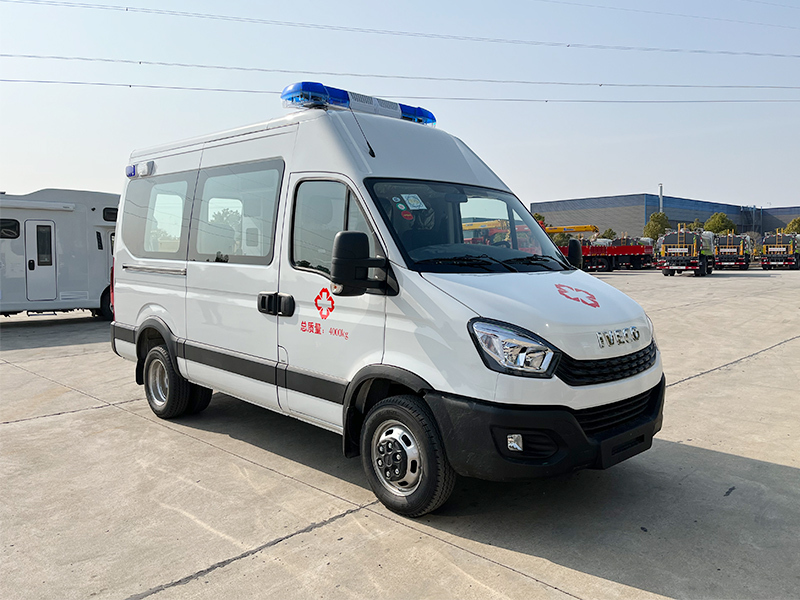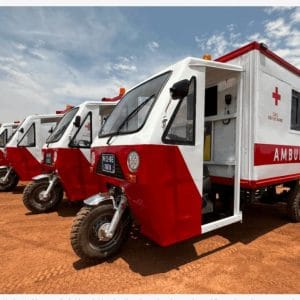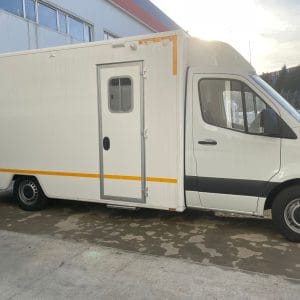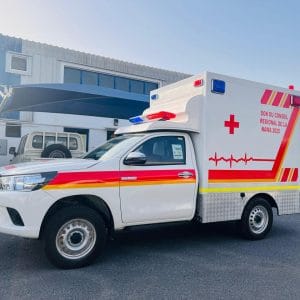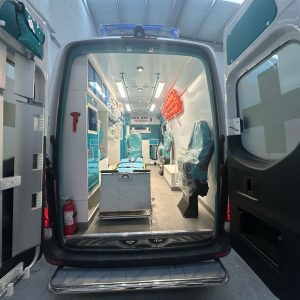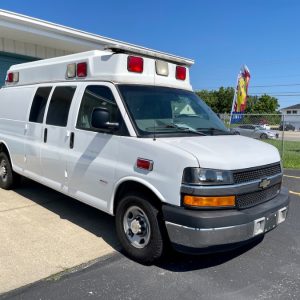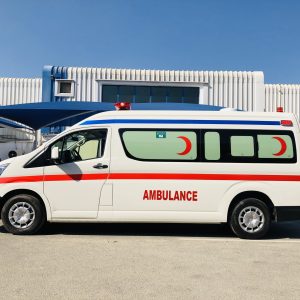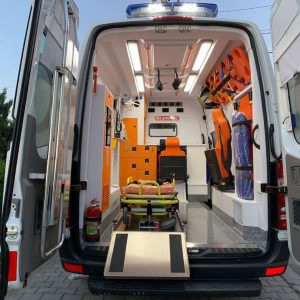EN 1789:2020 Iveco Daily Ambulance; First, it’s crucial to understand that EN 1789 is the definitive European standard that specifies the requirements for the design, testing, performance, and equipment of road ambulances. Its full title is: “Medical vehicles and their equipment – Road ambulances”.
The “2020” version is the latest iteration, which introduced significant updates over the previous 2007 version, particularly concerning safety, ergonomics, and environmental impact.
The standard defines several types of ambulances, but the most common for IVECO chassis are:
- Type C1: Patient Transport Ambulance (PTA) – For non-urgent transport of patients who require basic care.
- Type C2: Emergency Ambulance – The standard emergency response vehicle, designed for treatment and transport at the scene.
- Type C3: Mobile ICU / High Dependency Unit Ambulance – Equipped for advanced life support and critical care during transport.
IVECO’s Role: The Chassis Cab
IVECO does not typically build the complete ambulance. Instead, they manufacture the chassis cab—the engine, chassis, drivetrain, and driver’s cabin. This chassis cab is then sent to a specialized ambulance manufacturer (bodybuilder) who constructs the medical module onto the back, ensuring it meets all the requirements of EN 1789.
IVECO is a leading provider of chassis cabs for ambulances in Europe because their vehicles offer several key advantages:
- Reliability: Known for robust and durable commercial vehicle platforms.
- Fuel Efficiency: Modern engines (often diesel, but moving towards CNG and electric) are designed for high mileage and cost-effective operation.
- Handling and Maneuverability: A good balance of size, power, and turning circle for navigating urban and rural environments.
- Driver Comfort: Ergonomic cabins designed for long shifts, which is crucial for ambulance crews.
Common IVECO Models Used for EN 1789 Ambulances
- IVECO Daily: The most popular choice for Type C2 emergency ambulances.
- Why: It offers an excellent payload capacity, a wide range of wheelbases, and powerful yet efficient engines. Its size is ideal for the standard ambulance box, providing ample space for equipment and patient care without being overly difficult to drive.
- IVECO Eurocargo: Used for larger ambulances, often Type C3 Mobile ICUs or larger capacity vehicles.
- Why: Provides a heavier-duty chassis for larger bodies and more specialized, heavier equipment required for critical care transfers.
- IVECO Vector & IVECO S-Way: Used for the largest specialist vehicles, like major incident command units or mobile blood transfusion units, which fall under different categories of EN 1789.
Key EN 1789:2020 Requirements & How They Relate to an IVECO Ambulance
When a bodybuilder constructs an ambulance on an IVECO chassis, they must adhere to hundreds of clauses in the standard. Here are the most critical ones:
| Feature Category | EN 1789:2020 Requirement | Implementation on an IVECO Ambulance |
|---|---|---|
| Crash Safety | Dynamically Tested Crew Seat: The attendant’s seat must withstand a 10g deceleration test. | The bodybuilder installs a specially engineered seat and restraint system in the medical compartment, anchored to a reinforced floor and structure. |
| Stability & Rollover | The vehicle must pass a tilt table test to ensure it doesn’t roll over too easily. | The combination of the IVECO chassis’s low center of gravity and the bodybuilder’s careful weight distribution (placing heavy equipment low) ensures stability. |
| Medical Compartment | Specific dimensions for internal height, width, and length. Defined zones for patient, attendant, and equipment. | The body is designed to maximize the usable space on the chosen IVECO wheelbase. The interior layout is meticulously planned. |
| Equipment Mounting | All medical devices and shelves must remain secured during a crash or emergency maneuver. | Equipment is mounted using custom brackets and tested locking systems to the vehicle’s reinforced structure. |
| Electrical System | Redundant power supplies, protection against voltage drop, and specific requirements for warning devices. | A sophisticated dual-battery system is installed, often with a voltage-sensitive relay (VSR) to keep the “medically essential” battery charged and isolated. The famous “blue lights” and sirens must meet specific visibility and audibility standards. |
| Lighting & Visibility | Specific requirements for interior medical lighting (must be colour-correct and dimmable) and exterior scene lighting. | LED panels are installed inside for examination lights. Powerful, low-energy LED floodlights are mounted on the exterior sides and rear. |
| Ventilation & Heating | Efficient heating and ventilation systems for patient and crew comfort. | An independent auxiliary heater (e.g., Webasto, Eberspächer) is almost always installed to provide heat without running the main engine. |
| Access & Egress | Specific dimensions for doors and steps to allow safe loading/unloading of patients and equipment. | The rear and side doors are designed with low step heights and handrails. The stretcher loading system is tested for ease of use. |
Summary: The Complete Picture
An “IVECO Ambulance En1789” is therefore a collaboration:
- IVECO provides a reliable, efficient, and capable chassis cab (like the Daily or Eurocargo).
- A certified ambulance bodybuilder designs and constructs the medical body, integrating all the medical, electrical, and safety systems.
- The final vehicle is tested and certified as a whole to prove full compliance with the EN 1789:2020 standard.
When you see this designation, it signifies a modern, high-quality emergency medical vehicle built to one of the world’s most stringent safety and performance standards on a proven and reliable IVECO platform.
If you are looking to procure one, you would typically contact an ambulance manufacturer who will help you select the right IVECO chassis for your specific needs (e.g., Type C2 for 999 response or Type C3 for critical care).


